Kouyasan is around fifty kilometers south of Osaka which is the
largest city in the western Japan. Kukai (a.k.a. Koubou Taishi) was
dispatched to Tang and learnt Buddhism. He returned to Japan and established
Kongoubuji (temple) at Kouyasan which is a highland (around 900m above the
sea level). Kouyasan is called “Buddhism city in the sky”. It is a sacred area
which has more than one hundred temples. People in the Edo period (1603~1868) visited there while they visited Ise shrine, Kyoto and Osaka. They climbed by foot to reach the
temple. It is a pilgrimage and a popular tourist
destination even until now.
117の塔頭寺院がある高野山は、その全体が金剛峯寺の境内とされています。厳かな地ですが、伊勢参り、京大阪めぐりの旅で訪れる地でもありました。でも、紀ノ川からの登りは車でもきつかった。さすが、「天空の仏教都市」です。昔の人はよくぞ歩いて登ったと思います。
Danjo Garan、檀上伽藍
“Garan” is a quiet and secluded place for
monks to gather and practice. Kukai built the temple here at first.
伽藍は梵語で、僧侶が集い修行する閑静で清浄な場所という意味だそうです。お大師様は壇上伽藍から造営を始めました。
Chumon (gate): it has been destroyed many times by fire and was rebuilt in 2015.
壇上伽藍中門。火災のため2015年の再建です。
There is Kondou (main hall) inside the gate, which was rebuilt in 1932. Most of annual rituals are held here.
中門をくぐると金堂。こちらは1932年の再建です。年中行事の大半がここで行われるとのことです。
Konpon Daitou (central tower) is on the right side of Kondou, which was rebuilt in 1937. It enshrines a 3D mandala, and the center is Dainich Nyorai statue.
金堂の右には根本大塔があります。塔内は大日如来像を囲む立体の曼荼羅になっています。1937年再建です。
A legend has that Kukai threw a sanko (ritual article) from China and it was discovered on the tree at this place, that’s why he built his monastery here. The tree is called Sanko-no-Matsu (pine tree), and it is special because it has tree needle leaves which resemble a sanko.
三鈷(さんこ)の松。三鈷は法具です。弘法大師が、帰朝前に明州の港から三鈷杵を投げたところこの松にかかっていいます。普通の松の葉は、2葉か5葉ですが、この松の葉は三つです。
Kongoubuji (temple)、総本山 金剛峯寺
Kongoubuji is the main temple of Koyasan
Shingon Sect.
There are two lanterns at the gate. The crest of the regional shrine is on the left, and one of the Seiganji (temple) is on the right. Seiganji was built by H. Toyotomi who was a ruler in the 16th century, and it was renamed to Kongoubuji in 1869. We can see this pair of crests at the various places in this temple.
右の三頭右巴(みつがしらみぎともえ)は、高野山の鎮守・丹生都比売神社、左は豊臣秀吉拝領の青巌寺の寺紋。青巌寺は亡母のために建立した寺で、明治二年に金剛峯寺と解消されたそうです。この二つの紋が、境内処々に並べられています。
There is Daishu-den behind the gate. It’s so huge. Btw, the ladder to the roof is set permanently.
大主殿が迎えてくれます。スケールに圧倒されました。屋根への梯子が常設されています。
The entrance of Daishu-den is on the right end. Only royal family and executives of Kouyasan used the main entrance.
右側の参拝口に進みます。大主殿の右側の大玄関は、天皇・皇族や高野山重職だけが出入りしたそうです。
Reception: There is a large room called "Ohiroma" on the right side of this long corridor. These were used for important rituals. Excellent pictures of cranes and trees on the sliding doors (fusuma) are painted. Photography is prohibited here.
大主殿の受付に入ると、長い廊下が見渡せました。右側の大広間の襖絵は撮影禁止ですが、観光的にはハイライトです。
Ohiroma (from brochure)、大広間(リーフレットから)
This big palanquin is set at the main entrance.
大玄関に立派な駕籠が置いてあります。
A red umbrella and two luggage are at the opposite side of the palanquin.
駕籠の反対側には傘と行李が置かれています。
This one is used at the ritual. 法会で使われる輿です。
At the end of corridor, we encounter a fine stone garden. We walk more.
大広間の前の廊下を歩くと、素敵な石庭があります。更に奥に進みます。
We reach a large building called “Sin (new) – betsuden (annex)” where tea is served to visitors.
広い新別殿ではお茶の接待を受けられます。
Green tea and confectionaries
Banryutei: This is the largest stone garden in Japan (2340㎡). The stones in front form a female dragon, and ones behind form a male dragon.
日本最大の石庭の蟠龍庭は2340㎡。手前が雌龍で、奥が雄龍です。
It’s a dragon if you watch it from this position. Sand is from Kyoto and stones are from Shikoku Island where Kukai (founder) was born in. Sand is used in stead of water in this garden.
ここから見ると確かに龍ですね。中央の勅使門から見ると右側が雌龍になります。京の白川砂と四国の石を配しているといいます。
This is another garden. The tall tree called “Kouya maki” attracts me.
奥殿に沿って歩くと、四季の中庭があります。中央の高野槙が目を惹きます。
Grand kitchen is one of the highlights. Three rice cookers in front can make 280kg of rice which are served to three thousand people.
巨大な台所。手前の釜は三個で3000人分のご飯を作れるという二石釜です。
Okunoin (temple)、奥の院
There are also company tombs. This is a tomb for “Yakult” employees.
大名だけでなく企業の墓所もあります。
This is a tomb of termites (ants) which were built by the association of extermination companies.
シロアリの墓所もありました。
Behind Gobyo bridge is a sacred area, so photography is prohibited. The building “Tourou-dou (lantern hall)” keeps the light for more than a millennium. There is another hall behind. Legend has that Kukai still prays there even until now.
御廟橋の先は聖域で、写真撮影は禁止です。正面に見えるのが、平安時代以来の灯がともる燈籠堂、その奥に弘法大師御廟があり、今も弘法大師が祈りを捧げていると言われています。
They prayed at various halls in Okunoin. Their clear voice was so impressive.
塔頭を廻って読経する女性の僧侶の透明な声が印象的でした
Temples in Kouyasan、高野山の寺院
Temples have accommodated people,
especially who are related to the temple.
高野山の寺院は関係する土地の人達を泊める宿坊でした。
Rengejouin、蓮華定院
It displays lanterns with the crest of Sanada Clan because it is a family temple of Sanada. Yukimura Sanada and so on stayed here. Moreover, it accommodates people of Shinshu which was Sanada’s territory. A lord sent a letter to this temple in order to ask to accommodate people in his land. Happily, everyone can stay here now.
Reference (letter of the lord、海野氏からの手紙):Unno post town museum of history and folklore 海野宿歴史民俗資料館
真田家家紋・六文銭の提灯を掲げる本寺院は、関ヶ原の合戦後、幸村らが逗留した場所であり、真田家の菩提寺です。そして、信州海野宿の住民が高野山に来た時に泊まる宿坊でもありました。保養所のような感じでしょうか。今も宿坊で、誰でも宿泊できます。
The main hall was built more than 150 years ago.
本堂は、江戸時代に創建されたそうです。
There are tombs of Nobuyuki Sanada (Yukimura Sanada’s elder brother) and Nobumasa Sanada behind the temple.
お寺の奥には、幸村の兄で松代藩祖・信之と二代信政の墓所があります。
This temple is familiar with my region, but it is written “No Trespassing”.
Reference (a temple in my region invited a statue from Kitamuroin in 1851. 北室院からの仏像の勧請): Yoshino’s daily life 23, October in 1851(嘉永4年10月)
北室院は、私が住む千葉県と関係が深かったお寺ですが、立ち入りお断りとなっています。
The way to Kouyasan is steep and winding. I respect old travelers who walked this road.
車でも大変な高野山への道。昔の旅人は、よく歩いて登ったものだと思います。
Visited in March, 2020
Official website: http://www.koyasan.or.jp/en/(in
English)
http://www.koyasan.or.jp/ (in
Japanese), accessed in October, 2020
Previous post (A shrine which has lots of treasures、後醍醐天皇ら所縁の文化財がたくさんある神社です): Yoshimizu Shrine (Nara) 吉水神社(奈良・吉野)
Next post (Museum in Sikoku Island where the founder “Kukai” was born): Matsushige history and folklore museum 松茂町歴史民俗資料館









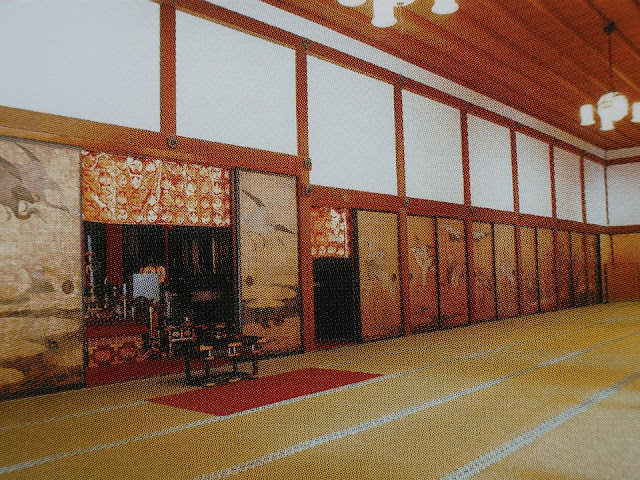


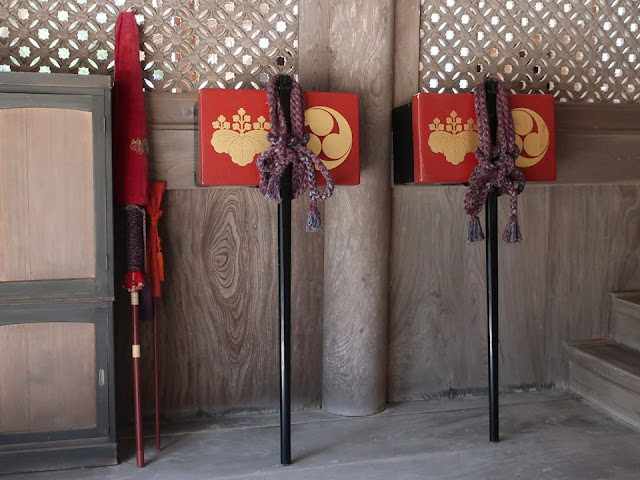










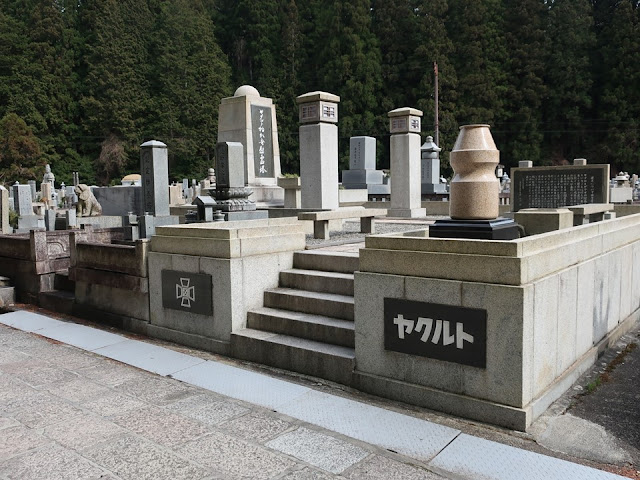

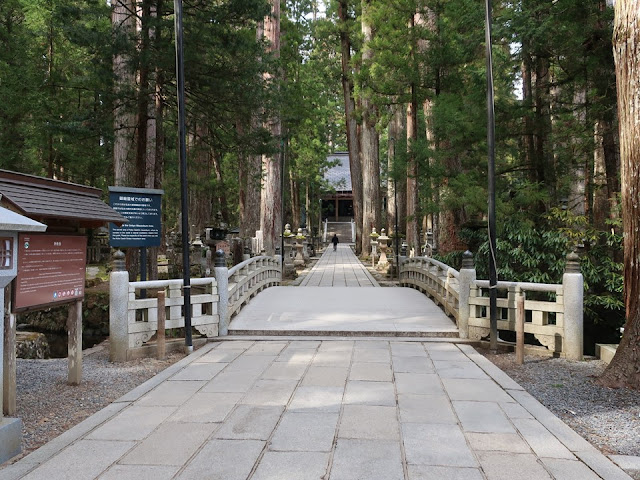
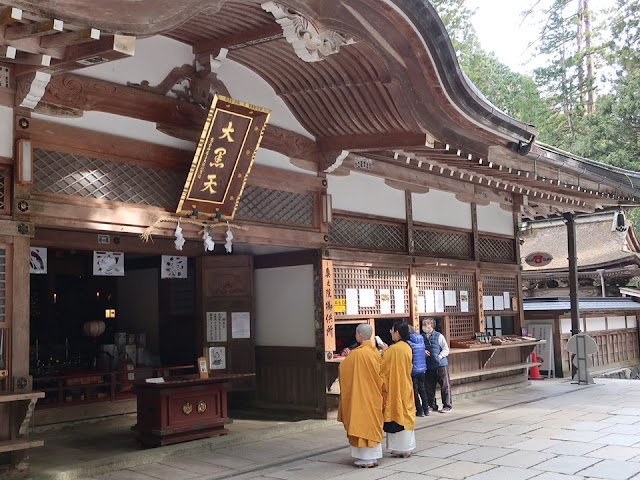






Comments
Post a Comment